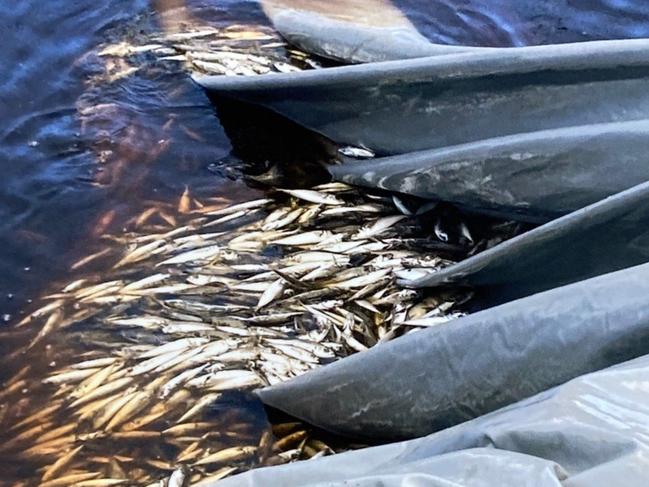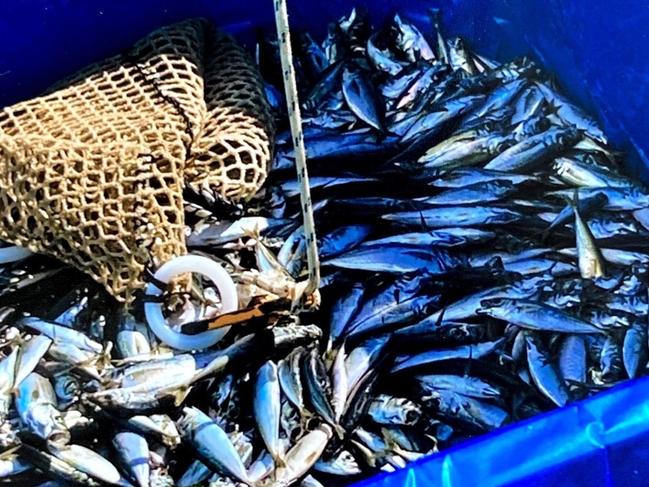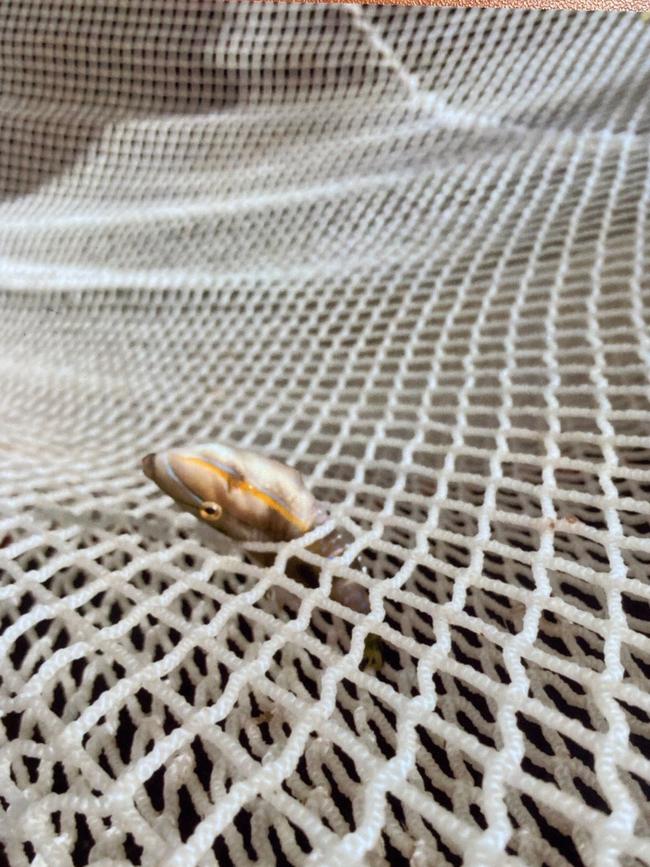‘They get stuck there and they die’: Bob Brown Foundation says wild fish are dying in salmon pens
Wild fish are being killed as a result of disease management processes at salmon farms, the Bob Brown Foundation has alleged. WARNING: DISTRESSING IMAGES >>
Tasmania
Don't miss out on the headlines from Tasmania. Followed categories will be added to My News.
THE Bob Brown foundation has accused the salmon industry of killing hundreds of wild fish, alleging the fish are getting stuck in nets and dying during a disease management process.
Several images from 2020 – allegedly taken at a Tassal farm along the D’Entrecasteaux Channel – have surfaced, depicting several fish dead on the water and one with its gills caught in a net.
Bob Brown Foundation fish farms and marine campaigner Bec Howarth said the deaths were a regular occurrence.
“They swim into the salmon pens when they’re small and they get stuck there when they grow and they die,” Ms Howarth said.
“The wild fish can’t survive this and they’re discarded.”

Ms Howarth said salmon are put through a bathing process to clean them, but wild fish could not survive the process.
“Bathing is a process by which the salmon is put into a pen of fresh water,” she said.
“It’s to wash the gills, it’s a necessary part of the disease management.
“The salmon can survive in fresh water, the wild fish cannot.”

She said mackerel, herring, leather jacket, barracuda and trumpeter were some of the species falling victim.
“It’s contributing to our decline in wild fish populations,” she said.
Ms Howarth believed it was an industry-wide issue.
“The industry absolutely should be putting more effort into separating the fish in a humane way,” she said.
“It’s a failure to protect our wild marine life.
“We’re calling on the government to thoroughly investigate this.”

A spokesperson for the Tasmanian Salmonid Growers Association, of which Tassal is a member, said measures were in place to mitigate risks.
“The salmon farming industry maintains stringent controls to continually reduce interactions with wildlife, including wild fish interactions with marine farming operations and the use of marine farming equipment,” they said.
“This is supported by ongoing investments in innovation and introduction of global best practice methods, including new pen designs, variations to operations and, in some cases, introduction of well boats.
“Any questions on the regulatory setting and permits associated with monitoring and sampling wild fish interactions with marine farming operations and the use of marine farming equipment need to be directed to the government.”





